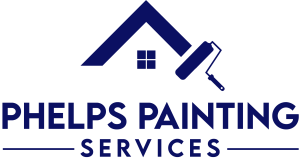Graffiti Removal Service vs DIY – The Smart Guide To Protect Your Property
Graffiti can be frustrating, not just because it looks bad, but because you’re left wondering the best way to remove it without damaging your property. The good news? There are several effective graffiti removal methods, but the key is choosing the right one for your surface and situation.
In this article, we’ll walk through the types of graffiti removal available – including DIY graffiti removal options, graffiti removal techniques used by professionals, and the graffiti cleaning methods that work best on common building materials.
Starting With Soap And Water
Every graffiti removal attempt should begin with regular dish soap or laundry detergent mixed with warm water. This approach works surprisingly well on fresh graffiti, especially if it’s less than 24 hours old. Many property owners skip this step and jump straight to harsh chemicals, but you’d be amazed how often simple soap removes new marker ink, some spray paints, chalk, and water-based graffiti.
The process is straightforward: mix soap with warm water, scrub gently with a soft brush or cloth, and then rinse with clean water. This method is safe for all building materials, won’t damage anything, costs almost nothing, and you probably have everything you need at home already.
Even if it doesn’t remove the graffiti completely, soap and water often soften it enough to make other removal methods more effective.
Use Store-Bought Graffiti Removers (With Caution)
If soap and water don’t work, your next step is special cleaning products designed specifically for graffiti removal. These products are available at most hardware stores and are formulated to handle most spray paints and markers on hard surfaces like metal, glass, and sealed concrete. They contain stronger chemicals than soap, so you’ll need to follow the instructions exactly, always wear gloves, and test a small hidden area first.
These graffiti removers work by breaking down the chemical bonds in paint and marker materials, making them easier to wipe away. Make sure you have fresh air when using them and keep them away from children and pets. They’re more powerful than soap, but still manageable for most DIY jobs.
Understanding Pressure Washing
Pressure washing uses high-pressure water to blast graffiti off surfaces, and many property owners think this is the ultimate solution for any graffiti problem. While pressure washing can be very effective, it’s also potentially very damaging if used incorrectly. It works great for concrete driveways, metal fences, and other hard surfaces where you won’t cause damage, but should never be used on brick, painted walls, or heritage buildings.
High pressure can drive paint deeper into surfaces or cause permanent damage. If you’re not 100% sure the material can handle it, skip this option or consult a professional graffiti removal service.
Physical Removal Methods
Sometimes graffiti needs to be physically scraped or sanded off the surface. This approach involves using tools like plastic scrapers, fine sandpaper, or wire brushes to mechanically remove the vandalism. Physical removal should only be considered on surfaces you don’t mind scratching, like metal railings or concrete areas that can be repainted afterwards.
The important thing to understand about physical removal is that it will change how your surface looks. You might need to repaint or refinish the area once you’re done, so factor that into your decision.
What Professionals Bring To The Table
Professional graffiti removal services have access to equipment and expertise that aren’t available to property owners. They use specialized tools like steam cleaners, and industrial-strength chemicals not sold to the public, and have the experience to know what works on different surfaces without causing damage. Perhaps most importantly, they carry insurance in case something goes wrong during the removal process.
Professional services become essential for heritage buildings, large areas of graffiti, expensive surfaces like natural stone, or when your own attempts haven’t worked. They can often remove graffiti in one visit that might take you multiple attempts to handle, and they won’t damage your building while figuring out the right approach. While professional services cost more upfront, they often save money by avoiding the trial-and-error process that can lead to building damage.
Identifying What Type of Graffiti You’re Dealing With
Understanding what’s actually on your wall helps you choose the most effective removal method. Spray paint is the most common type and usually comes off with graffiti remover products, though fresh spray paint that’s less than a week old is much easier to remove than paint that’s been curing for months. Permanent markers often respond well to graffiti removers or even rubbing alcohol, with black markers typically being more stubborn than coloured ones.
If you’re dealing with chalk or washable markers, these should come off easily with soap and water. If they don’t respond to gentle cleaning, they’re probably not actually washable markers despite their appearances.
Etched or scratched graffiti represents permanent damage that usually requires professional restoration or complete replacement of the affected surface. Stickers can be peeled off manually, but you’ll likely need graffiti remover to deal with the sticky residue left behind.
Making Smart Decisions Based On Your Building
Your building material plays a huge role in determining which removal methods are safe to attempt. If your building is made of brick or stone, start with soap and water, but call professionals if that doesn’t work because these porous materials require specialized handling. Metal and glass surfaces give you more options – you can try soap and water, then graffiti remover, and potentially even pressure washing if other methods fail.
Painted surfaces require extra caution because graffiti removers might damage the underlying paint. Start with soap and water, then use graffiti remover very carefully if needed. Heritage or older buildings should receive professional attention immediately rather than risking expensive damage with DIY attempts.
The age of the graffiti also matters significantly.
Fresh graffiti under 24 hours old has a good chance of coming off with soap and water, while graffiti that’s been there for a few days will probably need commercial graffiti remover. Vandalism that’s been there for weeks or months likely needs professional intervention, and large areas of graffiti are generally too time-consuming and challenging for DIY approaches.
What You Should Never Try
Avoid using household cleaners like bleach, paint thinner, or toilet bowl cleaner on graffiti. These products can permanently damage your building materials or actually make the graffiti worse by setting it deeper into the surface. Don’t pressure wash brick or stone surfaces, as this drives paint deeper and makes professional removal much more difficult and expensive.
If gentle methods don’t work immediately, resist the urge to keep trying stronger and stronger approaches. You might be dealing with graffiti that genuinely requires professional equipment and expertise. Don’t ignore basic safety precautions either – even “gentle” cleaners can cause skin and eye irritation if you don’t wear proper protection.
Getting Professional Help When You Need It
Don’t feel pressured to tackle every graffiti problem on your own. Some removal jobs demand professional expertise, and knowing when to step back from DIY efforts can save you time, money, and frustration. Calling in the experts early often prevents costly mistakes and ensures the job is done right the first time.
Phelps Painting Services supports property owners across Brisbane, the Gold Coast, and Northern NSW in navigating their graffiti removal options. Whether you’re seeking professional removal or expert advice, we’re here to help protect your property and restore its appearance efficiently and effectively.
Ready to get your property looking its best again? Reach out to us today and let’s tackle graffiti the right way—quick, clean, and hassle-free.



